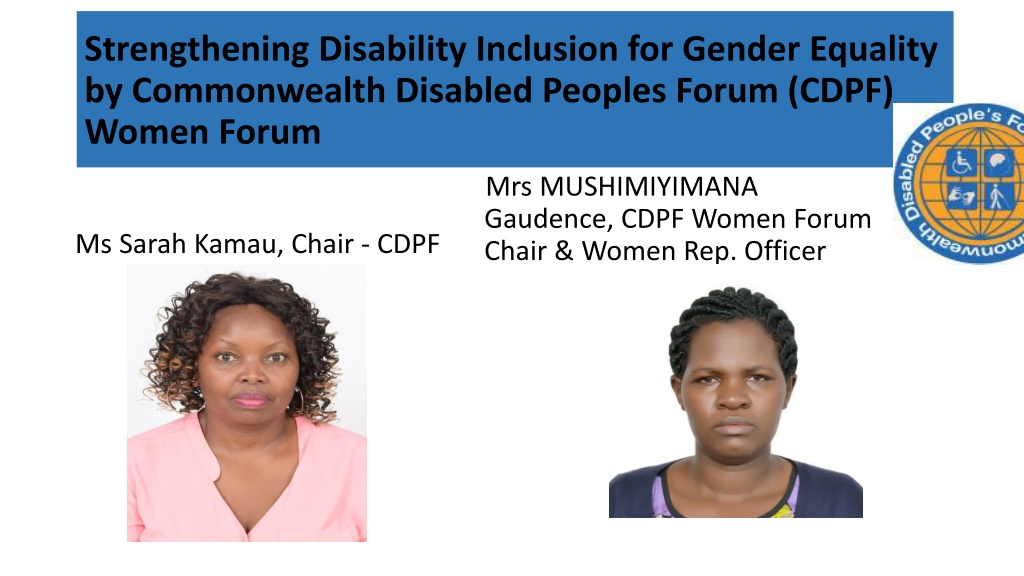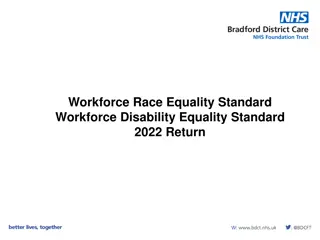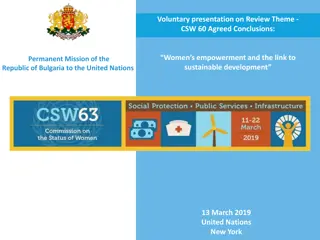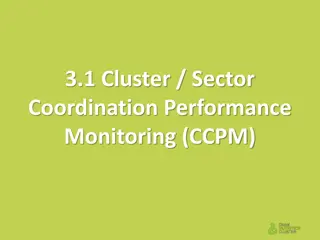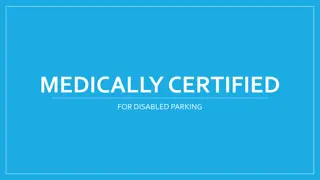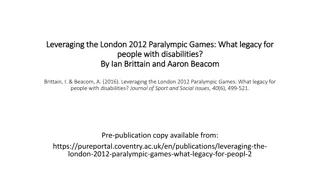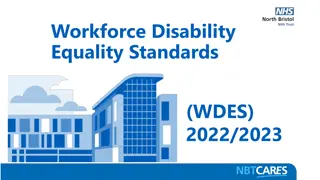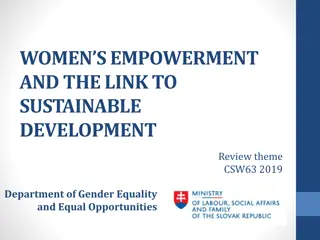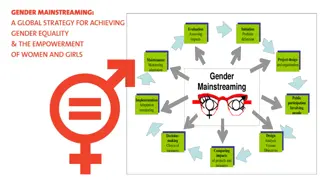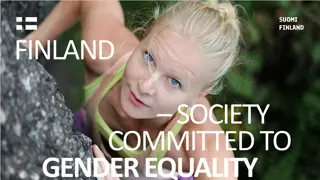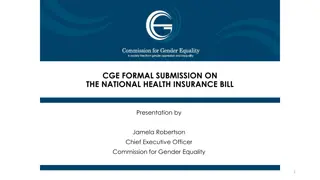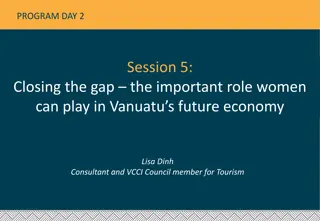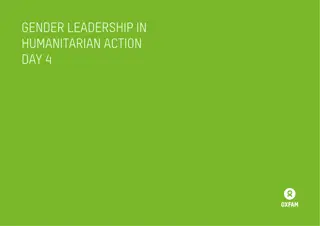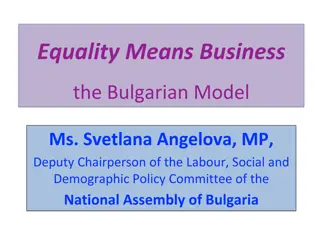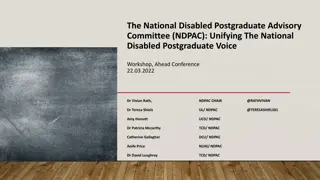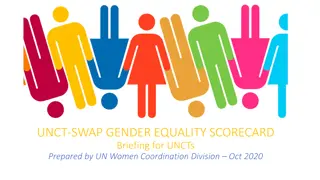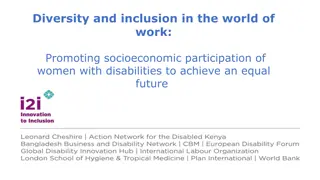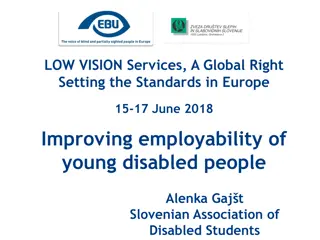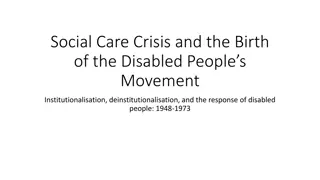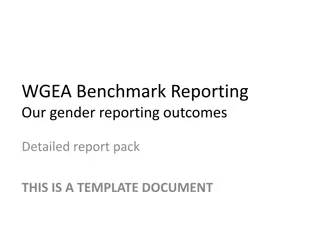Empowering Women with Disabilities for Gender Equality: Insights from Commonwealth Disabled People Forum
Commonwealth Disabled People Forum (CDPF) Women Forum focuses on strengthening disability inclusion for gender equality. Women with disabilities face various barriers like lack of clean water, teenage pregnancy, and exclusion from government programs. The forum emphasizes key priorities such as desegregated data, addressing stigma and discrimination, and promoting accessibility to education, employment, and economic empowerment.
Download Presentation

Please find below an Image/Link to download the presentation.
The content on the website is provided AS IS for your information and personal use only. It may not be sold, licensed, or shared on other websites without obtaining consent from the author. Download presentation by click this link. If you encounter any issues during the download, it is possible that the publisher has removed the file from their server.
E N D
Presentation Transcript
Strengthening Disability Inclusion for Gender Equality by Commonwealth Disabled Peoples Forum (CDPF) Women Forum Mrs MUSHIMIYIMANA Gaudence, CDPF Women Forum Chair & Women Rep. Officer Ms Sarah Kamau, Chair - CDPF
What is Commonwealth Disabled People forum Created in 2019 Membership: organizations of persons with disabilities from 49 countries out of 56 across the Commonwealth Youth and women with disabilities Forums in place Conducted Disability Equality training during the COVID 2019 Virtual regional meetings operational
Why Disability Inclusive Gender Equality Recent WHO reported 1.3 billion (1 in 6) people globally have significant disability 80% live in low and middle income countries and majority are women Because of their gender and disability women with disability are doubly discriminated in accessing education, health, SRHR, employment & work They lack space and voice among the disability and women s movement in general Inclusion is a global human rights ask and cost effective!
Issues/Barriers Women with disabilities Face Need for clean water High Teenage Pregnancy Disaster Climate Change response not inclusive Exclusion from Consultation/Government Programmes Not included Gov Services Excluded from General Women's Organisations Lack Training ICT Lack of Disaggregated Data Disempowered Low Self Esteem Lack financial support for disability needs and start up activity Poverty (Triple jeopardy) Access to Political Participation /Leadership/Social leadership Lack of Awareness of Laws/Not included Gov Services Poor Health Provision esp Mental Discrimination, Stigma and cultutral beliefs Treated Weak family members-Patriarchy,Single Barriers to Sex and Relationships Health including mensuration Gender Based Violence/Rape Accessibility Less chance of Econ Activity employment Less chance Education Opp & Illiteracy 0 5 10 15 20 25 30
Key priorities areas 1. 2. 3. 4. 5. Cross cutting issues 1. Desegregated data by gender and disability 2. Stigma and discrimination 3. Accessibility Education Employment and Economic Empowerment Move beyond Gender Equality to promote Gender Equity Health care services Political participation
Strategies towards addressing the issues Strategies towards addressing the issues 1. Organizing and strengthening networks of women and girls with disabilities from the grassroots, national, regional and International levels 2. Full participation of women and girls with disabilities into general women s movement 3. Inclusion in leadership and decision making positions at all levels 4. Raising awareness across different mainstream partners organizations 5. Calling on commonwealth government to put in place inclusion policies for women and girls with disabilities and to implement them 6. Governments to fund disabled peopled organizations to build their capacity, operationalization and good governance 7. Building sustainable partnerships for inclusion 8. Advocate and we call upon all women s rights activists and women movement in general to convince government and other stakeholders to produce desegregated data by gender and disabilities 9. Pilot models and practices of Inclusive Education for women and girls with disabilities at all levels
Achievement of global agenda depend on Achievement of global agenda depend on how women with disabilities are included how women with disabilities are included SDG 5: Gender Equality; CRPD Article 6: Women with disabilities The SDG 1 Poverty; CRPD 10 Right to life; cannot be achieved until 16% of world population with disabilities are educated and have equal access to economic opportunities One woman with disability left behind means one lost opportunity towards achieving SGD 5 Gender Equality indicators SDG 3 Good Health and Well being CRPD 25 Health, 16 freedom from exploitation, violence and abuse, 21 freedom of expression, 31, 32 International Cooperation The SDG 4 Quality education, CRPD 24 Education- will lag behind until the numbers of young girls and boys with disabilities have access to accessible inclusive education for every child SDG 10 Reduced inequalities; CRPD 5, Equality and non-discrimination, 9 accessibility, 27 work & employment, 28 adequate standard of living & social protection, 29 political and public life, 31 statistics and data collection
We therefore call upon We therefore call upon The general women movement across the commonwealth to consider women as a diverse group and therefore 1. Disability inclusive gender policies, laws and strategies are paramount towards Strengthening disability inclusion for Gender Equality 2. Ensure there are specific intervention and strategies aiming at organising and empowering girls and women with disabilities in accordance with Article 6 of the UNCPD 3. Promote meaningful representation and participation of women with disabilities in the decision making bodies including the women s networks at all levels as experts 4. Inclusive Gender based violence prevention and response as well as SRHR programs will safeguard dignity of many girls and women with disabilities whom justice and rights to consent is denied just because of their different abilities, their diversity ! 5. Working with organisations of women and girls with disabilities might be a strategy and goal through the whole journey
Some practices might serve as models Expanding safe spaces for girls and women with disabilities https://youtu.be/PLIZ86IAOMM Ending violence https://youtu.be/xQle-quJ90E Amplifying voices of women and girls project in Kenya
